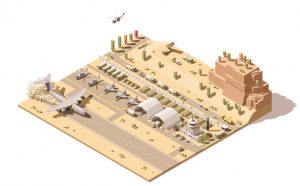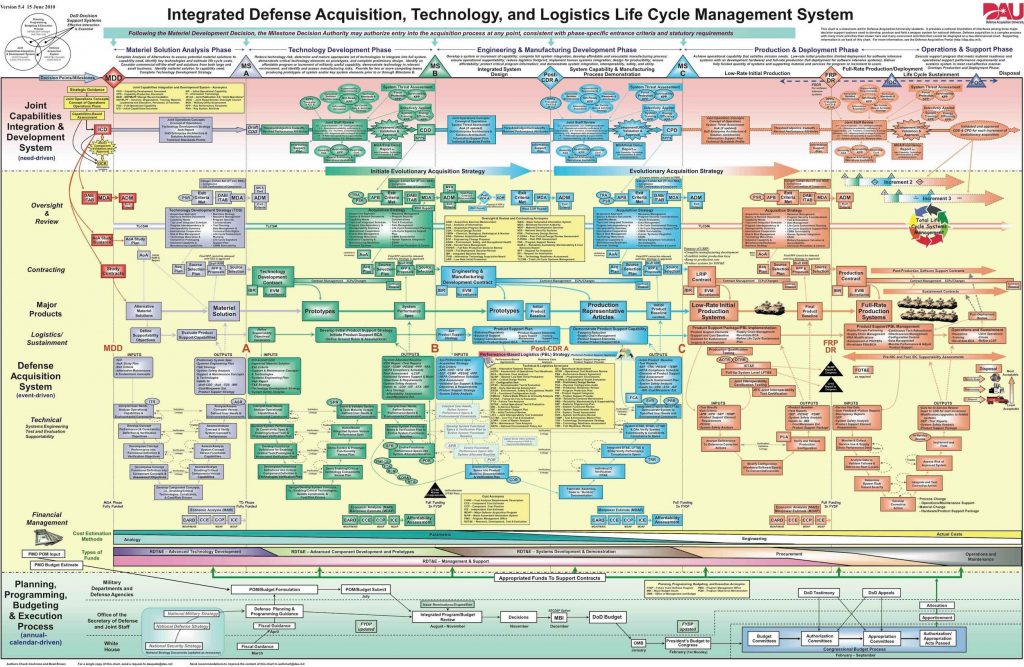 The Pentagon is not only the symbol of the most powerful military power in the world, but the supreme governing body of the American military: the public organization that has contributed the most to the consolidation of project management as a discipline. The technological development experienced by the arms industry and the expansion of logistics operations supported the development of numerous methodologies and an abundant class of engineers.
The Pentagon is not only the symbol of the most powerful military power in the world, but the supreme governing body of the American military: the public organization that has contributed the most to the consolidation of project management as a discipline. The technological development experienced by the arms industry and the expansion of logistics operations supported the development of numerous methodologies and an abundant class of engineers.
For example, the Work Structure Decomposition (DEBS) method was designed by the Department of Defense and was first deployed to the United States Navy in 1957 within a ballistic program. In addition, one of the most common careers for military members and retired veterans is precisely to direct projects. Military matters assume the highest demands on timely delivery and quality of results.
On the other hand, the fact that the Pentagon has access to huge budgets for other states carries a very important risk of wastage.
You cannot live in glory: in complex environments with multiple projects and where it is practically impossible to always have an overview of all the work, it is very easy to produce problems of inefficiency. This explains why project monitoring is a fundamental mission in the management of any portfolio.
X-ray of the Pentagon
In January of 2015, an internal report of the Department of Defense revealed a chilling fact: in the next 5 years a total of 125 trillion dollars could be saved, which would be enough to appropriate adjustments in the administrative and bureaucratic departments.
Approximately a quarter of the Pentagon's budget is spent on administration, management and maintenance costs, and cannot be used for the mission of the agency.
So, what are all these resources destined for? In large part, the maintenance of a complex structure of management processes in which a total of one million people are employed, a number forty times greater than the employees of the pentagon itself and practically identical to the ones that are in operations Military. The six major administrative processes are Human Resources, Health Management, Financial Management, Logistics, Procurement and Suppliers, and Real Estate Management.
In the image below you can see an example of the intricate bureaucratic web in which all these back-office workers are involved in one way or another. The title of the image is: Integrated Department of Defense system for the acquisition, development of technology and Supply logistics.

That said, the image shows the complex process by which it is decided to contract (or not) a particular service, to develop (or not) an investigation, to manufacture (or not) a weapon or other device, to move it (or not) to the front and keep (or not) weapons, vehicles or any other type of technology.
The inefficiency of this process is proverbial, as in the case of the development of the Bradley vehicle in the 80s, whose total development cost 15 billion dollars.
The solution: efficient management
Other documentation for internal use indicates some of the measures that can be taken to improve the management of these projects, making it much more efficient in the administration of all financial resources. By way of illustration, in 5 years, according to their calculations, 4,325 more soldiers could be hired.
Among the most interesting solutions for other organizations are the following:
- Establishment of transversal teams for each process that can create common rules and methodologies for all
- Prioritization of contracts
- Review of contracts to exclude and discount all items that do not correspond to real requirements
- Training of cross-cutting teams to improve productivity
- Development of internal initiatives in priority processes and activities
Interestingly, pentagon solutions go through the creation of a portfolio of internal optimization and operational innovation projects that would be overseen and supported by program managers.
